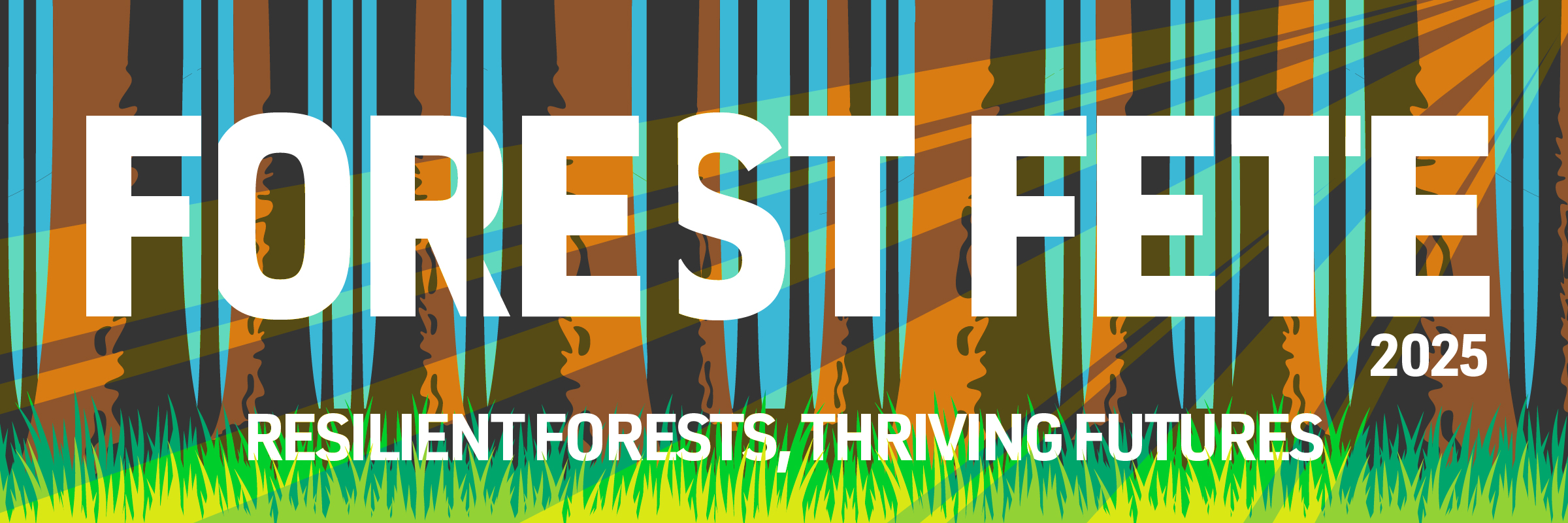FOREST FLASH
January 2025
In Pacific Forest Trust’s e-newsletter, Forest Flash, we send you the most recent PFT news and updates on forests, clean water, climate, and wildlife. Subscribe here.
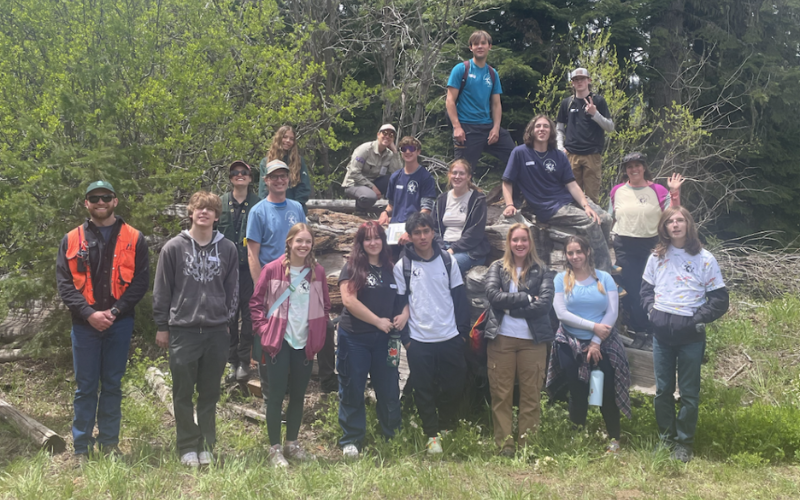
PFT is thrilled to announce that we have been awarded a grant to further develop our educational program at our Mount Ashland Demonstration Forest (MADF) by the Jackson Soil and Water Conservation District.
With 1,120 acres of working forest on the Siskiyou Crest in southern Oregon, the MADF is a living classroom for to learn about climate resilient forest restoration and management inn this uniquely diverse forest system. On the property, we offer hands-on learning experiences for, high school students, demonstrating how well-managed forests can achieve ecological resilience, climate adaptation, and economic value. A key focus currently is how we can restore a more fire resilient forest, and how we manage for and with fire, recognizing that these are fire adapted forests by nature, and that well managed fire can be beneficial for forests and communities.
We have hosted a series of educational events on MADF, including guided tours for local schools. This grant will allow us to create additional interpretive signage, develop tailored learning materials, and host community workshops that deepen public understanding of forest conservation, as well as provide students with continued exposure to professional opportunities in natural-resource management.
Central to this initiative is the goal of fostering stronger connections between people and forests, especially through engaging high school students in all the many aspects of forest restoration and management for the vital roles forests play in our lives. Core highlights are foci on strategies and techniques that reduce fire risk and return to a more natural low intensity fire regime; sustain biodiversity, protect and improve watersheds, and sequester carbon in the face of climate change.
PFT extends its gratitude to the Jackson Soil and Water Conservation District for their generous support and to all our partners who help make the MADF a beacon of education and conservation. We look forward to sharing updates as this project continues to grow and develop!

Southern California’s devastating fires highlight the critical need for proactive management and conservation in the Wildland-Urban Interface (WUI). These areas, where human development meets fire-prone landscapes, are at extreme risk from climate-driven wildfire activity. Without significant investment in resilience strategies, the costs—both human and financial—will only grow.
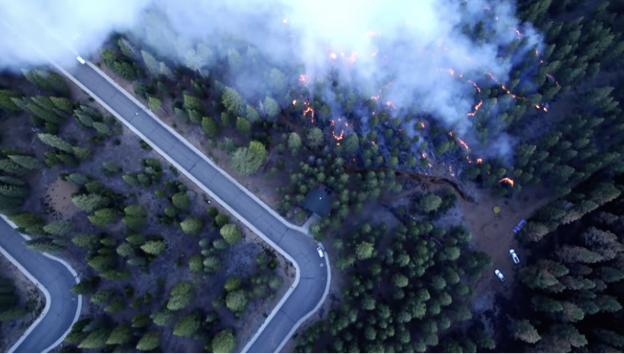
Our Rx burn on McCloud Soda Springs, pictured here, reduces fuel loads in and near the WUI.
The recently approved California Climate Bond Act (Proposition 4) and the land management and conservation recommendations from the AB1757 Expert Advisory Committee, which Governor Gavin Newsom state’s climate targets last Earth Day, rightly emphasize reducing fire risks in the WUI through robust management and conservation measures. These efforts are essential to protect communities and restore ecological health in fire-adapted landscapes.
Key strategies include making homes less flammable, implementing landscape-scale restoration, and ensuring land management aligns with fire-resilient practices. Fire-safe building upgrades, defensible space maintenance, and invasive species removal in WUI areas are proven to reduce risk. Focusing on in-fill for housing and limiting rural sprawl help reduce the fire risk in the WUI. Additionally, restoring native vegetation and incorporating controlled burns in the surrounding areas helps curb the spread of fires, making them manageable, not catastrophic.
This work requires sustained funding. California has significantly increased wildfire preparedness investments since 2020, including $2.7 billion allocated for landscape resilience. However, with shifting state budget priorities, it is vital to defend the current allocations laid out in the Climate Bond for both wildfire and habitat resilience. This bond, shaped with PFT’s expertise and guidance, provides a unique opportunity to secure stable funding for WUI management, while also addressing broader landscape restoration goals.
The WUI is where fire resilience intersects with public safety and environmental stewardship. Working in these areas, California can reduce the escalating risks of wildfire, meet its climate, watershed and biodiversity targets, and safeguard its communities. As the state budget is finalized, we must ensure these crucial efforts remain funded and supported.
Please consider a donation to the Pacific Forest Trust. Your help—in all capacities—makes our work possible. Thanks for supporting us as we support forests!
Restoring Aquatic Habitats in the van Eck Oregon Forest
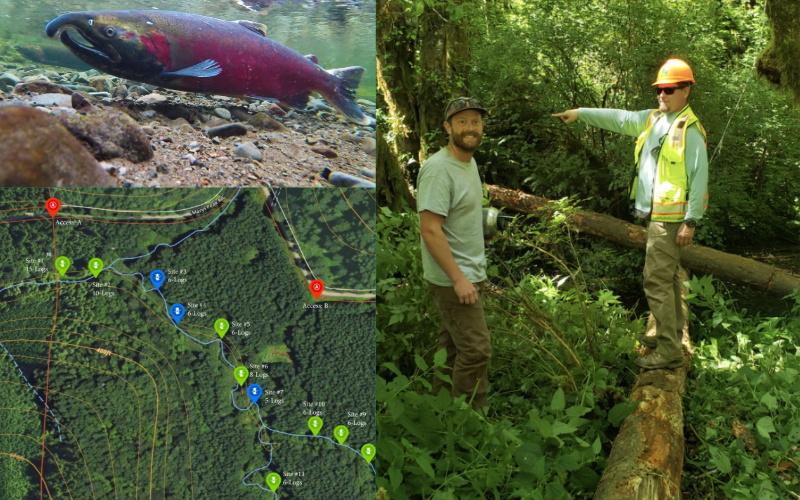
For 25 years, PFT has been restoring the watersheds and aquatic resources of the 7,200-acre van Eck Oregon forest. This unique landscape, which encompasses 20 miles of fish-bearing streams and headwaters or key tributaries to a several streams and rivers, including Tumtum, Sugarbowl, and Big Elk Creeks as well as the Yaquina River. Overall, the property provides critical habitat for seven species of vulnerable and endangered fish, including five species of salmon as well as green sturgeon. (In fact, we were quite happy to document sturgeon in one of our sloughs in January—what an impressive fish!) Through a series of targeted restoration projects, we have improved fish passage, restored stream complexity, and bolstered the resilience of these vital ecosystems.

Green Sturgeon spotted this January in Poole Slough on van Eck Oregon.
Over most of this time, our focus has been to reduce sediment from roads and logging as well as to restore stream channel locations and complexity. In the last five years, we have also included a focus on tidal wetlands, as we manage a notable area bordering both Poole and Flesher sloughs. Partnering with the MidCoast Watersheds Council and The Wetlands Conservancy, PFT is restoring these tidal marshes and sloughs—ecosystems that have dwindled by over 95% across Oregon. By reestablishing tidal connectivity, planting native species, and removing invasive plants, these efforts have improved habitats for juvenile salmon and enhanced the ecosystem’s resilience to sea-level rise.
In 2024, PFT worked with grants from ODFW, USFWS and the Alsea Stewardship Group to restore portions of Sugarbowl and Big Elk Creeks, two of the most important spawning grounds for Oregon Coast coho salmon, a threatened species under the Endangered Species Act. Large wood placements and riparian plantings created pools, gravel beds, and winter-rearing habitats to support the salmon’s lifecycle.
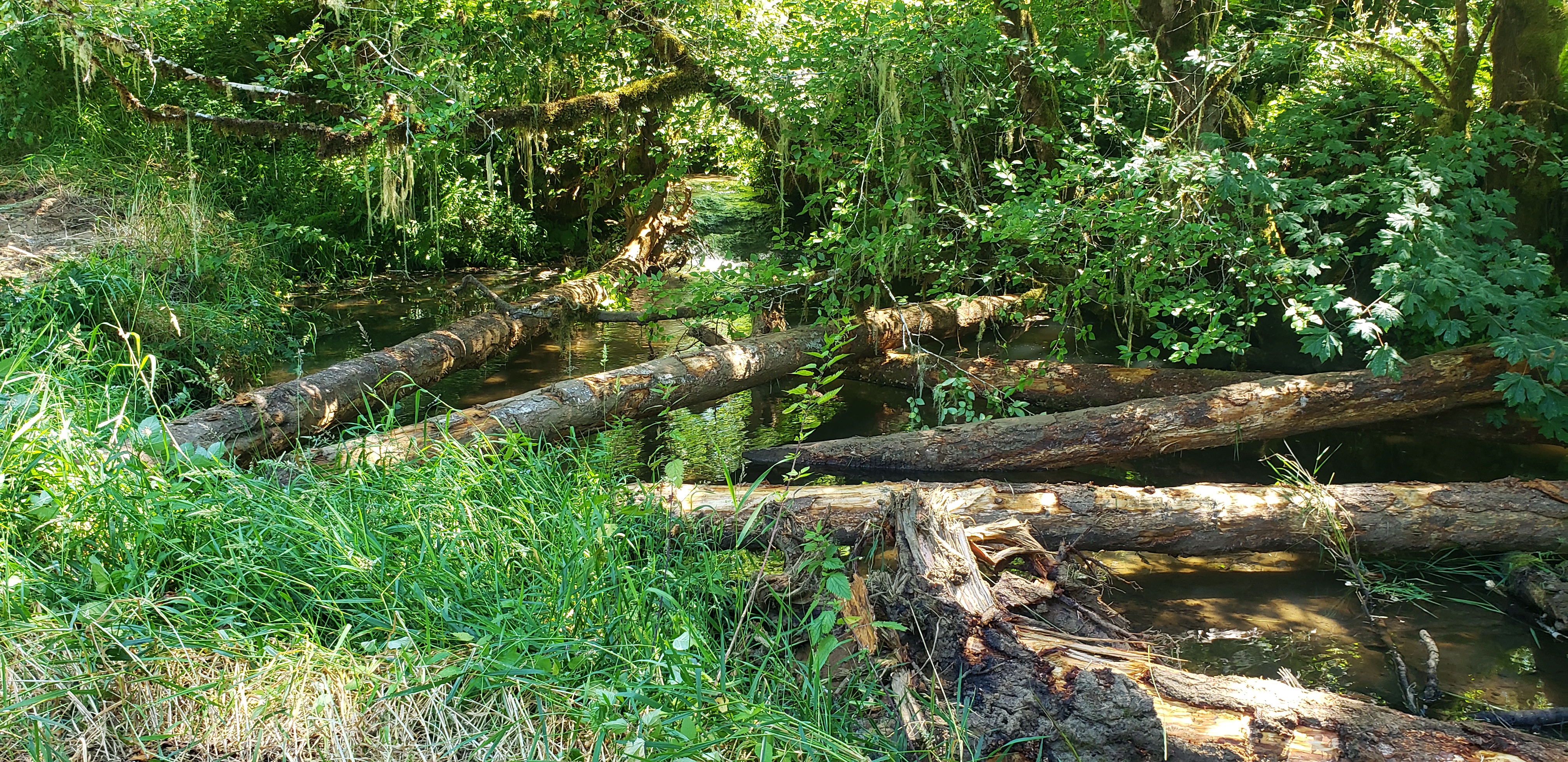
Large wood placements on Sugarbowl Creek create pools conducive to boosting salmon’s winter-rearing habitats.
Now, collaborating with Oregon Department of Fish and Wildlife (ODFW), PFT is developing the Wright Creek Restoration Plan. This plan is focused on enhancing riparian and wetland habitats along Wright Creek, including areas critical for beaver and the coastal giant salamander. Key goals are to remove invasive plants, restore native vegetation, and create the shaded habitats so necessary to fish. Importantly, this work is also designed to restore a very inviting habitat for beaver, which we hope to reintroduce in the area in the next few years. This complements another beaver-welcoming project we are working on with the Marys River Watershed Council on Shotpouch Creek, a more inland portion of the van Eck Oregon Forest. Large wood placements on Sugarbowl Creek create pools conducive to boosting salmon’s winter-rearing habitats.
These restoration projects have immediate benefits for fish and other aquatic and amphibious species, even as they also advance broader goals of ecosystem resilience as climate change advances.
ICYMI
In case you missed it (ICYMI), here are some other exciting things PFT has been involved in lately!
- The Winter issue of our biannual print newsletter, ForestLife, has hit inboxes and is now online! Don’t miss out on great stories about tall-tree discoveries, wildfire mitigation techniques, and massive efforts to conserve California’s critical headwaters.
- A New Year calls for a New Role. Good thing we’re greatly expanding our team! Check out PFT’s Careers page for more information on our open positions. Join us on the cutting edge of sustainable forestry and nature-based solutions.
- The Oregon Department of Transportation was awarded $33 million in federal funding to build the Mariposa Preserve Wildlife Crossing over I-5 in Southern Oregon. Spanning the Cascade-Siskiyou National Monument—where PFT strategically conserves forests– this project will restore critical habitat connectivity in a globally important biodiversity hotspot, reducing wildlife-vehicle collisions and supporting hundreds of species.
- Join us for the North American Carbon World (NACW) 2025 conference, March 25-27 in Los Angeles, California. Learn, collaborate, and network at North America’s premier event on carbon markets and climate policy. NACW 2025 will present the content, community, and connections for successfully navigating the low-carbon landscape and advancing market-based climate policies and mechanisms.
- Save the Date! This year’s Forest Fete Gala, our annual fundraiser and the premier event for forest lovers, is taking place on Thursday, April 9th, at San Francisco’s Cal Academy of Sciences. See here for more details.

